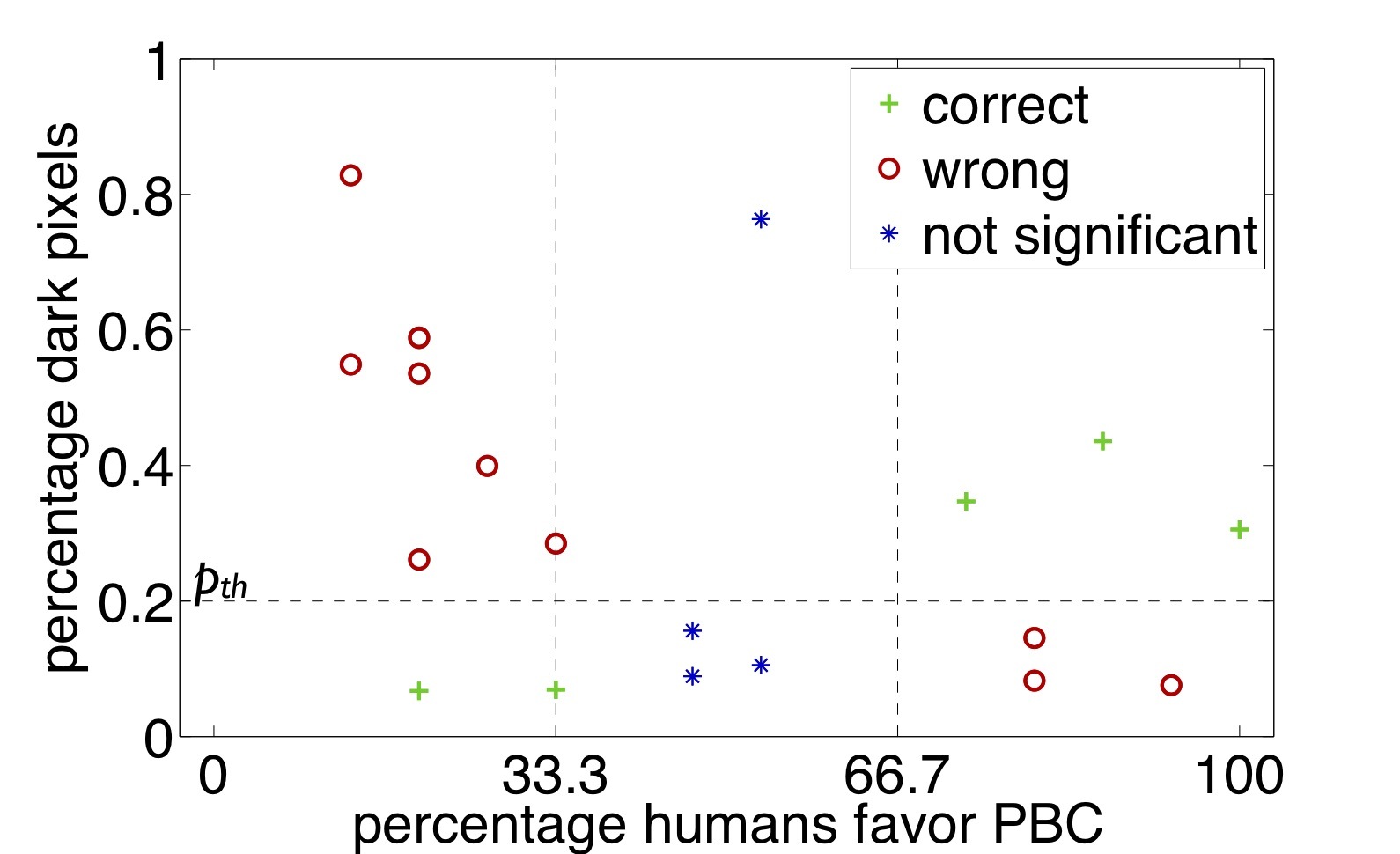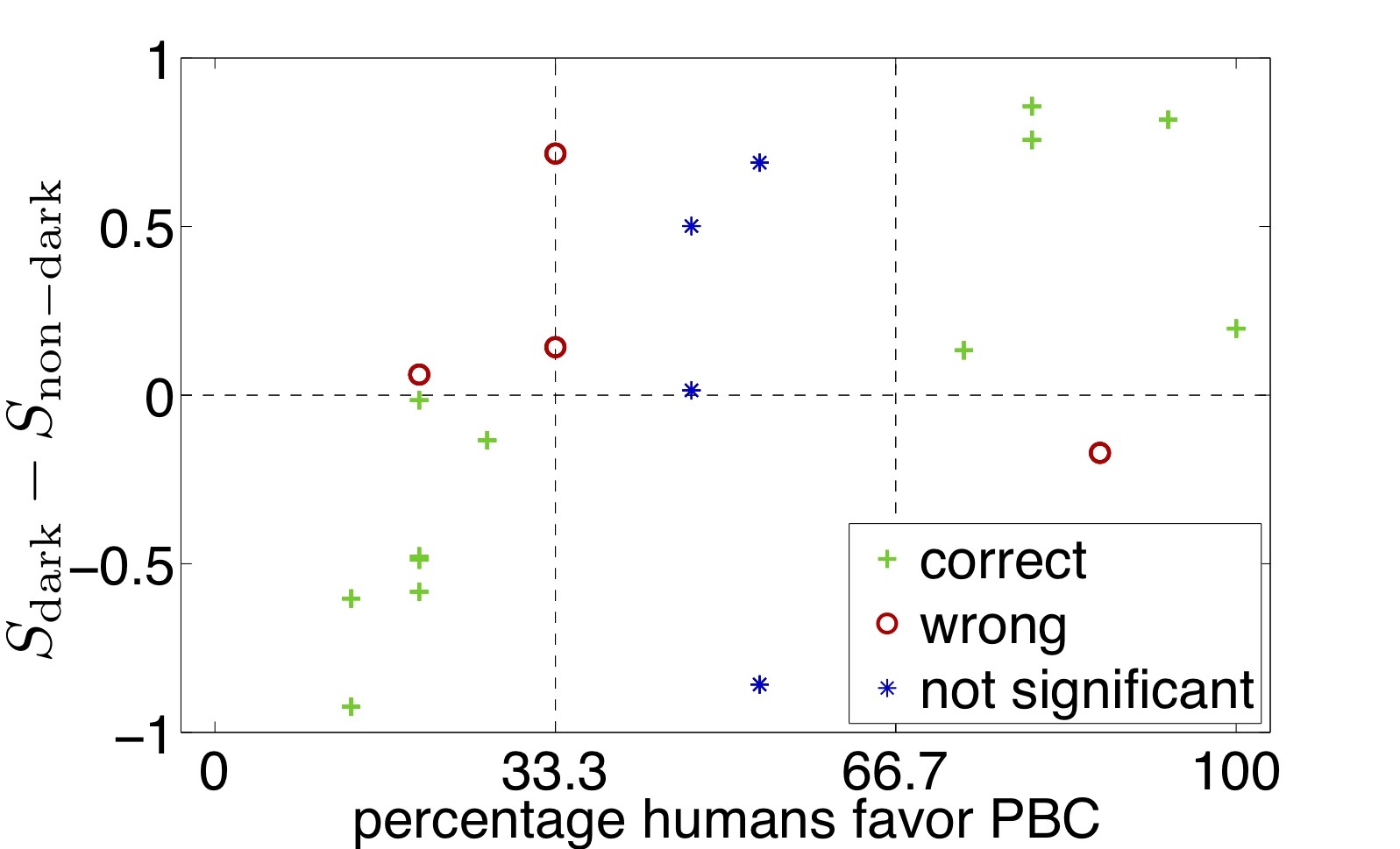Saliency-driven Black Point Compensation
Albrecht Lindner, Nicolas Bonnier, and Sabine S�sstrunk
Abstract
We present a novel framework for automatically determining whether or not to apply black point compensation (BPC) in image reproduction. Visually salient objects have a larger influence on determining image quality than the number of dark pixels in an image, and thus should drive the use of BPC. We propose a simple and efficient algorithmic implementation to determine when to apply BPC based on low-level saliency estimation. We evaluate our algorithm with a psychophysical experiment on an image data set printed with or without BPC on a Canon printer. We find that our algorithm is correctly able to predict the observers' preferences in all cases when the saliency maps are unambiguous and accurate.
Reference
Albrecht Lindner, Nicolas Bonnier, and Sabine S�sstrunk,
Saliency-driven Black Point Compensation,
IS&T / SPIE Electronic Imaging, Color Imaging XVI: Displaying, Processing, Hardcopy, and Applications, vol. 7866, num. 8, January, 2011.
Data download
Images with ground truth
Necessary software
Saliency estimator
Alternative saliency estimator (newer, but not used in this BPC article)
Comparison of our method against simple threshold


Figure 1. Left: simple thresholding of percentage of dark pixels. Please remark that it is not possible to determine a threshold that causes many correct decisions. Right: normalized saliency difference of the dark and non-dark regions. A thresholding on this data yields a higher performance.

